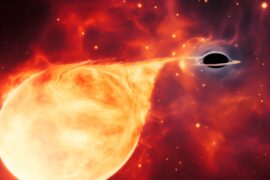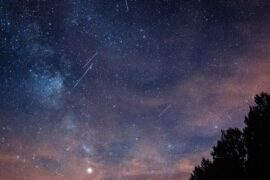The big dipper and the little dipper are two of the most popular star formations in the sky thanks to the brightness of the stars that form them and their recognizable shapes. They are often confused with each other so in this article we are going to analyze the differences between the big dipper and the little dipper so you can learn to recognize them easily and impress your friend with some astronomy facts the next time you go camping.
What are the big dipper and the little dipper?
Both, the big dipper and the little dipper are asterisms. An asterism is a popular formation of stars in the sky that form a certain shape or pattern. That sounds a lot like a constellation, right? true. Asterisms are kind of like colloquial, small constellations that are not officially recognized, mainly because the stars in most asterisms already belong to a constellation.
Popular asterisms include the Summer triangle, the Northern cross, the great diamond, and of course, the big and the little dippers.
Why are the big dipper and the little dipper called that?
The big dipper and the little dipper receive their names because of the similarity to a kitchen ladle, or “dipper”. It is quite curious these two similar shapes happened to be so close to each other so the names stuck in popular culture.

Where are the big dipper and the little dipper?
The big dipper and the little dipper are located inside the Ursa Major and Ursa Minor constellations respectively.
Both asterisms and their constellations can be seen all year in the Northern hemisphere (U.S., Canada, Europe) and due to their position in the sky, they are circumpolar in most of these locations, meaning they almost never set below the horizon.
Differences between the big dipper and the little dipper
The big dipper and the little dipper can be confused with each other due to their similar shapes and positions, so let’s take a look at the things that differentiate them from each other.
The most obvious difference between the two is their area size. The big dipper, as it’s name implies, covers a greater area of the sky than the little dipper. But this difference isn’t as obvious sometimes, as the little dipper contains Polaris, also known as the Northern star, and one of the brightest and most recognizable stars in the sky, which makes it easier to find with the help of a compass.
The following fact sheet compares the two asterisms with their similarities and differences.
| Big Dipper | Little Dipper | |
| Constellation | Ursa Major | Ursa Minor |
| Number of stars | 7 | 6 |
| Brightest star | Dubhe (α Ursae Majoris) | Polaris (α Ursae Minoris) |
| Best seen in | April | June |
| Declination | 50° to 60° | 65° to 90° |
| Quadrant | NQ2 | NQ3 |
| Right ascension | 11h | 15h |
The following image shows the respective positions of the big dipper and the little dipper in relation to each other.
It also shows one of the easiest ways to find the little dipper (and Ursa Minor) which is to trace an imaginary line that from stars that make up the corners of the “dip” opposite to the handle.
Tracing this line will guide you almost exactly to Polaris, the brightest star in the little dipper, and a star whose position points almost exactly North at all times.

List of stars in the Big Dipper
The following are the seven stars that make up the big dipper and some general facts about each.
| Proper Name | Designation | Magnitude | Distance in light years |
|---|---|---|---|
| Dubhe | Alpha Ursa Majoris | 1.8 | 124 |
| Merak | Beta Ursa Majoris | 2.4 | 79 |
| Phecda | Gamma Ursa Majoris | 2.4 | 84 |
| Megrez | Delta Ursa Majoris | 3.3 | 81 |
| Alioth | Epsilon Ursa Majoris | 1.8 | 81 |
| Mizar | Zeta Ursa Majoris | 2.1 | 78 |
| Alkaid | Rta Ursa Majoris | 1.9 | 101 |
List of stars in the little dipper
The following are the six stars that make up the little dipper and some general facts about each.
| Proper Name | Designation | Magnitude | Distance in light years |
|---|---|---|---|
| Polaris | Alpha Ursa Minoris | 1.97 | 431 |
| Kochab | Beta Ursa Minoris | 2.07 | 126 |
| Pherkad | Gamma Ursa Minoris | 3.04 | 480 |
| N/A | Epsilon Ursa Minoris | 4.21 | 346 |
| Ahfa al Farkadain | Zeta Ursa Minoris | 4.29 | 396 |
| Yildun | Delta Ursa Minoris | 4.35 | 183 |
Enjoyed this article?
Get daily 10-minute PDFs about astronomy to read before bed!
Sign up for our upcoming micro-learning service where you will learn something new about space and beyond every day while winding down.







